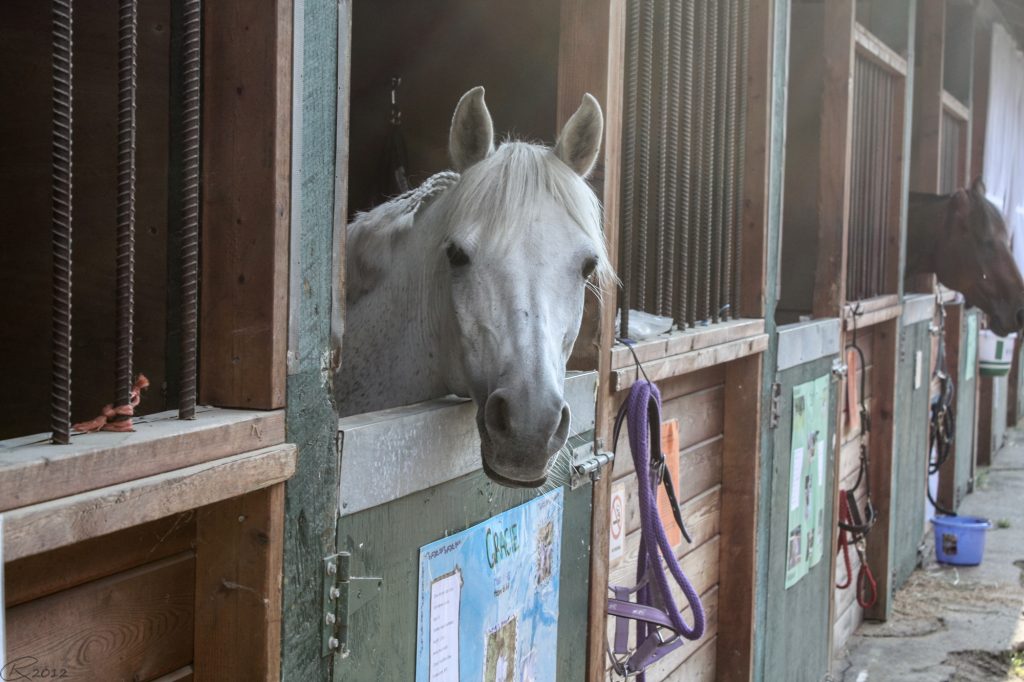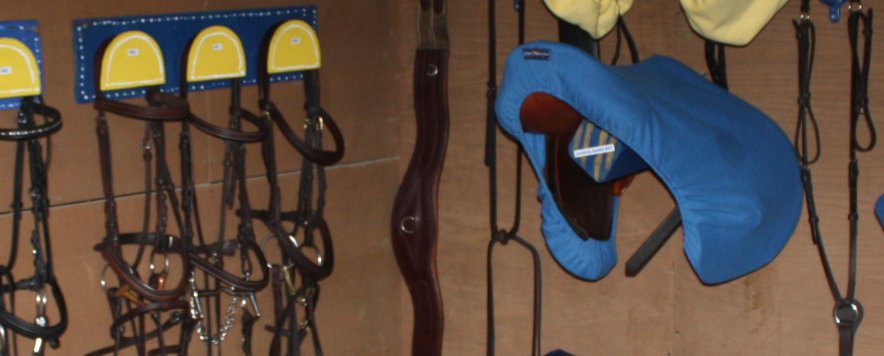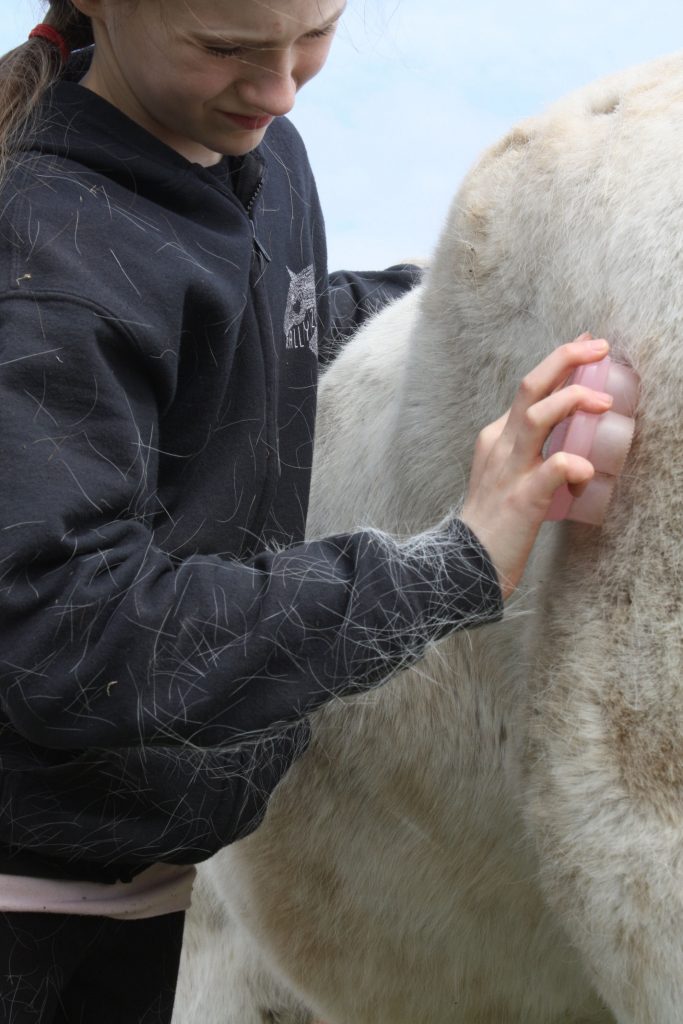Over the past dozen weeks or so I've written posts detailing the requirements for our Horsemanship Level 1. If you read through those posts, look at the relevant chapters of the Manual of Horsemanship, and attend at least three Horsemanship classes in which you have the opportunity to practice handling, grooming and tacking up, you…
Tag: instruction
Horse Sense
The final item on Horsemanship 1 checklist is: 11. Demonstrate safety and common sense when working around horses This is something our examiners make note of during the whole of the horsemanship assessment. We want to see that you are calm, confident, and sensible while handling your horse. Most candidates are very good at staying…

A Stable Situation: needs and habits of the horse
Aside from food, which was covered in last week's post, a horse needs shelter and security. These topics were both covered in previous posts (see links). For the Horsemanship 1 test we ask about 10. Stabling: needs and habits of the horse Along with reference to food, secure fencing, and shelter, we want to see…
Read More... from A Stable Situation: needs and habits of the horse

What's on the Menu?
There's a lot of news and fun stuff this week, so lets get the lesson over with right away, shall we? Basic Feeding First of all, go and re-read this post from January, which covers basic feeding. There is an entire science to equine nutrition, but for Horsemanship level 1 test we ask specifically about:…
Taking it off
Congratulations & Thanks! Before getting to our weekly topic I’d like to thank everyone who lent a hand at the work party on Sunday. We got an great start on Jack-proofing our fences, replaced several posts, built and installed two gates, and hauled those logs out to the back field to start building new cross…

Another Tacky Post
Now that we know the names of all those pieces of leather and metal that make up a horse's tack, we need to know how to put them on correctly. 7. Tack up (may be assisted) 'May be assisted' means that for Horsemanship level 1 you should know the correct method of tacking up. If…
On the Right Tack
As with points of the horse, the nomenclature of the saddle and bridle varies from the obscure to the obvious. Item #6 on the Horsemanship 1 test is: Identify simple parts of saddle & bridle While it may seem a nuisance to memorize these terms, it is fairly important to know your billet strap from…

The Well-Groomed Horse
Grooming the horse is one of the most important skill sets a rider needs to have. It allows you to check your horse for injuries, helps increase the circulation to his skin and muscles, prevents chafing from dirt under the tack, improves his appearance, and provides valuable bonding time. As you progress through your Horsemanship…
The Quick Release Knot
The quick release knot is item #4 on your Horsemanship Level 1 checklist. There are several methods of tying a quick release knot, and your instructor will teach you the most simple method. For your assessment we don't mind which one you use as long as it tightens when the horse pulls back releases smoothly…
Follow the Leader: the horse in hand
First off a huge 'thank-you' to everyone who came out to the emergency work party on Sunday to dig ditches, attack brambles and fix fences (with extra special thanks to Kat & Tyrel who came out TWO days in a row, having spent Saturday with Andy clearing the ditch around the manure pile -- awesome!)…
A Horse in Hand is Worth Two in the Field: catching & haltering
The second item on the Horsemanship Level 1 checklist is: 2. Enter, approach and safely halter horse in stall or paddock There are a myriad of videos out there, but really, you can't do it much better than this little girl: (Just watch to about 1:35 -- it gets a bit chaotic when her sister…
Read More... from A Horse in Hand is Worth Two in the Field: catching & haltering
Safe is sound
Needs of the Horse part III: Security In the first part of this series I stated that horses need food, shelter, and security. At first glace creating a secure environment for a horse seems fairly straightforward. After all, there aren't that many large predators left in most places where we keep horses (though losing a…
Connect the dots
Today's topic: where to make adjustments. This is one of my big secrets; you're in for a treat. One of the novice fencer's greatest challenges is getting used to the posture. Toes and knees tend to point every which way other than the way they're supposed to face. I chalk this up to the…
Do your homework!
You've all heard it (well, those of you attending class).Homework abounds at Academie Duello. Every rank in the Mastery program was assigned homework for the month of January. The homework we've assigned has two specific qualities simple: it can be explained easily in a sentence or two quick: it doesn't take long to do; about…
Google maps next update
Merry Christmas!Where ever you happen to be, grab something sword-y. A pencil will do, or a stick, or a toothbrush, just about anything will do. Point it down to the ground and then cut a montante. What did you think about? Some possible answers moving to guardia alta moving the sword up cutting a montante…
Solo Insights
I've gained some insights lately, specifically in longsword play that I thought I'd share. These all came from self-diagnosis, which is crucial for learning and is best done during your practice sessions when you can direct your own exercises. First, credit goes to Sean Hayes, Devon and Roland for their individual contributions and to me…
What did you expect to happen?
As promised, some reflections on practice garnered (or directly lifted) from Sean Hayes' workshop.A brief review: Sean was in Vancouver on 2, 3 & 4 December to teach three workshops on Armizare, Italy's knightly arts. He taught a workshop on solo practice, longsword body mechanics and unarmed, dagger and longsword. I'll be writing about the…
Slow work
I know you're probably wondering about all the great ideas that came out of Sean Hayes' workshop this past weekend. In truth there are many, but, I thought I would instead write about slow work and the things to keep in mind when you're practicing slow work.Here, then, are my seven rules to doing slow…